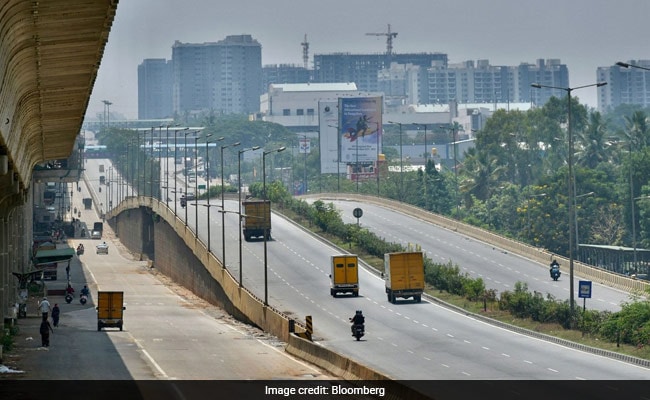Delhi - Agra NH Stretch To Become India's First Hi-Tech Corridor

- The Delhi - Agra NH corridor equipped with advanced traffic systems.
- It will be equipped with screens giving details of road conditions ahead.
- It will also get speed cameras that will issue challans electronically.
The Delhi - Agra national highway (NH) stretch is soon going to be a smart and hi-tech corridor and now commuters will have to be watchful of their speed as chances of getting 'challaned' is going to increase. The Delhi - Agra stretch that begins from the Old Mathura road will be the first NH corridor in the country to have screens which will alert drivers, if they are going beyond the permitted speed limit. These basically are the Vehicle Actuated Speed Displays (VASDs) and will be installed at different locations that will capture and display the vehicle speed in real-time.
Also Read: Speed Limit On National Highways Could Be Increased To 140 kmph: Nitin Gadkari

The advanced system will be eventually implemented across national highways.
The step is a part of the National Highways Authority of India's (NHAI) program to put in place the first Advanced Traffic Management System (ATMS) on any National Highway (NH), which aims to make the corridor seamless and safe for traffic movement. The authority has also floated a tender inviting the bids and the project stretch will begin from the start point of 4.4 km long 6-lane Badarpur Elevated Highway to Agra. The ATMS software will generate e-challans and will be integrated with the Vahan database, FASTag and NIC through which it will procure details of the vehicle for cross verification purpose. The information will be passed on to the traffic management system for further actions to be taken.
Also Read: Delhi Traffic Police Revises Maximum Speed Limits For All Vehicles
The 180 km stretch will be equipped with around 285 cameras and these will be used for monitoring accident prone areas, junctions, major median openings, structures, urban areas and major village junctions. Then, the video incident detection system, (VIDS) installed at 60 locations will identify abnormal conditions, accidents, stopped vehicles, wrong direction driving, poor visibility and vehicle details. These systems will be installed at black spots, accident-prone and other essential areas which will be selected by the enforcement agencies. The vehicle speed detection system (VSDS) featuring automatic traffic counter and classifier along with travel time management will be installed at two locations to detect over-speeding vehicles through the HSRP code on the registration plate and their details will be sent to the enforcement agencies. Moreover, the stretch will also get at least 22 variable message sign displays that will alert commuters about any sort of congestion of incident on the way ahead.
Source: Times Of India
Latest News
 Carandbike Team | Dec 30, 2025Hyundai Aura, Nios-Based Prime SD & Prime HB Taxis Launched In IndiaCarmaker rebrands fleet models under the Hyundai Prime brand rather than as separate variants of its passenger car range, as it previously did with the Xcent1 min read
Carandbike Team | Dec 30, 2025Hyundai Aura, Nios-Based Prime SD & Prime HB Taxis Launched In IndiaCarmaker rebrands fleet models under the Hyundai Prime brand rather than as separate variants of its passenger car range, as it previously did with the Xcent1 min read car&bike Team | Dec 30, 2025VinFast's V-Green Partners With Hindustan Petroleum To Setup EV Charging StationsV-Green is owned by Pham Nhat Vuong, Chairman of Vingroup Corporation and founder of VinFast.1 min read
car&bike Team | Dec 30, 2025VinFast's V-Green Partners With Hindustan Petroleum To Setup EV Charging StationsV-Green is owned by Pham Nhat Vuong, Chairman of Vingroup Corporation and founder of VinFast.1 min read Jafar Rizvi | Dec 30, 20252026 Kawasaki Versys 650, Vulcan S, Z650RS Launched: Now E20 CompatibleKawasaki has updated its 650cc range of motorcycles with E20 fuel compatibility and is offering new paint schemes.1 min read
Jafar Rizvi | Dec 30, 20252026 Kawasaki Versys 650, Vulcan S, Z650RS Launched: Now E20 CompatibleKawasaki has updated its 650cc range of motorcycles with E20 fuel compatibility and is offering new paint schemes.1 min read car&bike Team | Dec 29, 2025JSW MG Motor India Extends Assured Buyback Plan To 5 YearsMG has expanded its EV buyback programme, which is also offered for commercial MG ZS EV owners.1 min read
car&bike Team | Dec 29, 2025JSW MG Motor India Extends Assured Buyback Plan To 5 YearsMG has expanded its EV buyback programme, which is also offered for commercial MG ZS EV owners.1 min read car&bike Team | Dec 29, 2025Ducati XDiavel V4 Launched In India At Rs 30.89 LakhThe XDiavel V4 sits as a cruiser in the Diavel range and will be sold alongside the standard model.2 mins read
car&bike Team | Dec 29, 2025Ducati XDiavel V4 Launched In India At Rs 30.89 LakhThe XDiavel V4 sits as a cruiser in the Diavel range and will be sold alongside the standard model.2 mins read car&bike Team | Dec 28, 2025Nissan Gravite MPV Spied Testing Yet Again Ahead Of Jan 2026 DebutNissan’s subcompact MPV will share its underpinnings with the Renault Triber.1 min read
car&bike Team | Dec 28, 2025Nissan Gravite MPV Spied Testing Yet Again Ahead Of Jan 2026 DebutNissan’s subcompact MPV will share its underpinnings with the Renault Triber.1 min read
 Preetam Bora | Dec 30, 2025TVS Orbiter Review: Real-World Performance and Range TestedThe TVS Orbiter is a promising electric scooter promising decent range, practicality and pricing. But is there any reason to avoid it? We spent a few days getting to know it better.9 mins read
Preetam Bora | Dec 30, 2025TVS Orbiter Review: Real-World Performance and Range TestedThe TVS Orbiter is a promising electric scooter promising decent range, practicality and pricing. But is there any reason to avoid it? We spent a few days getting to know it better.9 mins read Jafar Rizvi | Dec 24, 2025MG Windsor EV 38 kWh Long-Term Report: IntroductionThe Windsor EV has joined our garage, and before it settles into daily duty, I took it out to get a sense of what living with an electric car is like.4 mins read
Jafar Rizvi | Dec 24, 2025MG Windsor EV 38 kWh Long-Term Report: IntroductionThe Windsor EV has joined our garage, and before it settles into daily duty, I took it out to get a sense of what living with an electric car is like.4 mins read Seshan Vijayraghvan | Dec 23, 20252026 Kia Seltos Review: Formula Is Spot On, But Is The Timing Right?The 2nd-gen Kia Seltos has arrived, but it has the challenge of facing strong rivals like the Victoris and Sierra. The question is simple - Does it still have what it takes?9 mins read
Seshan Vijayraghvan | Dec 23, 20252026 Kia Seltos Review: Formula Is Spot On, But Is The Timing Right?The 2nd-gen Kia Seltos has arrived, but it has the challenge of facing strong rivals like the Victoris and Sierra. The question is simple - Does it still have what it takes?9 mins read car&bike Team | Dec 26, 2025Tata Punch EV Long-Term Second Report: Highway Performance, Pros & ConsAfter a week of living with the Tata Punch EV Long Range—including a proper Mumbai-Nashik highway test—we've learned what this little electric SUV is really made of.1 min read
car&bike Team | Dec 26, 2025Tata Punch EV Long-Term Second Report: Highway Performance, Pros & ConsAfter a week of living with the Tata Punch EV Long Range—including a proper Mumbai-Nashik highway test—we've learned what this little electric SUV is really made of.1 min read Seshan Vijayraghvan | Dec 22, 20252026 Tata Harrier & Safari 1.5 Hyperion Review: By The Power Of Petrol!The new Tata Harrier and Safari petrol packs a new 1.5-litre TGDI Hyperion engine, but is it an ideal alternative to the diesel version?7 mins read
Seshan Vijayraghvan | Dec 22, 20252026 Tata Harrier & Safari 1.5 Hyperion Review: By The Power Of Petrol!The new Tata Harrier and Safari petrol packs a new 1.5-litre TGDI Hyperion engine, but is it an ideal alternative to the diesel version?7 mins read



















































































































